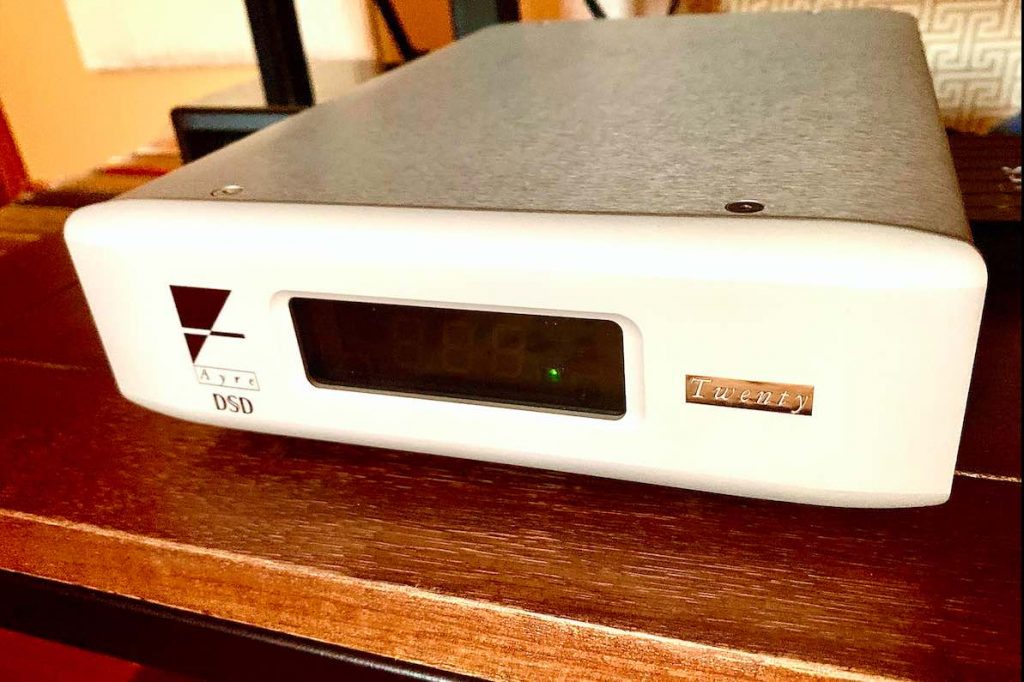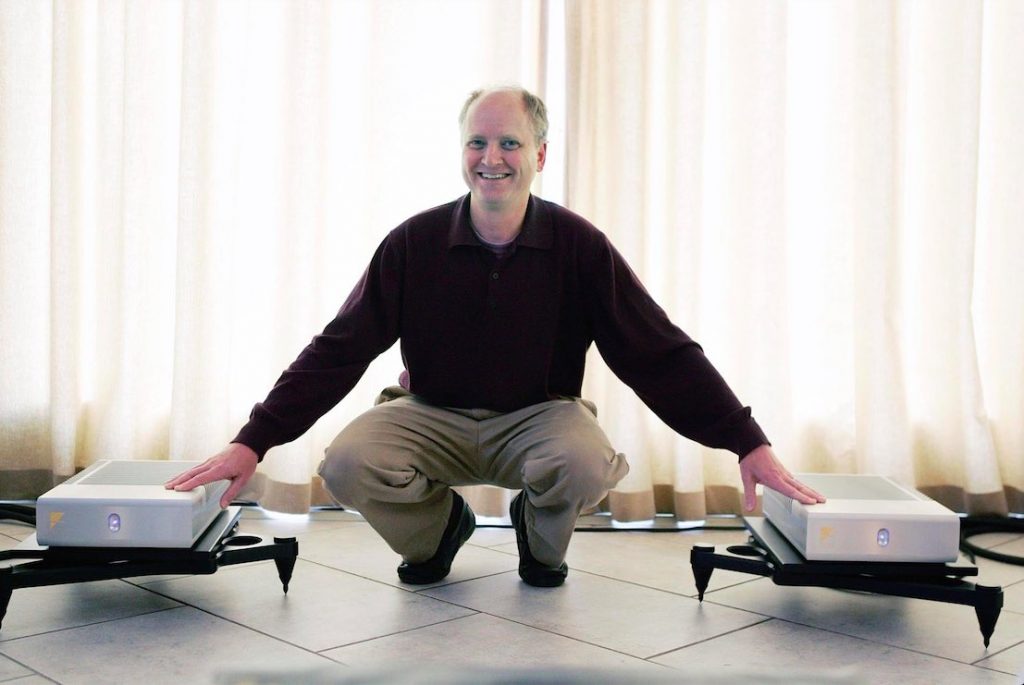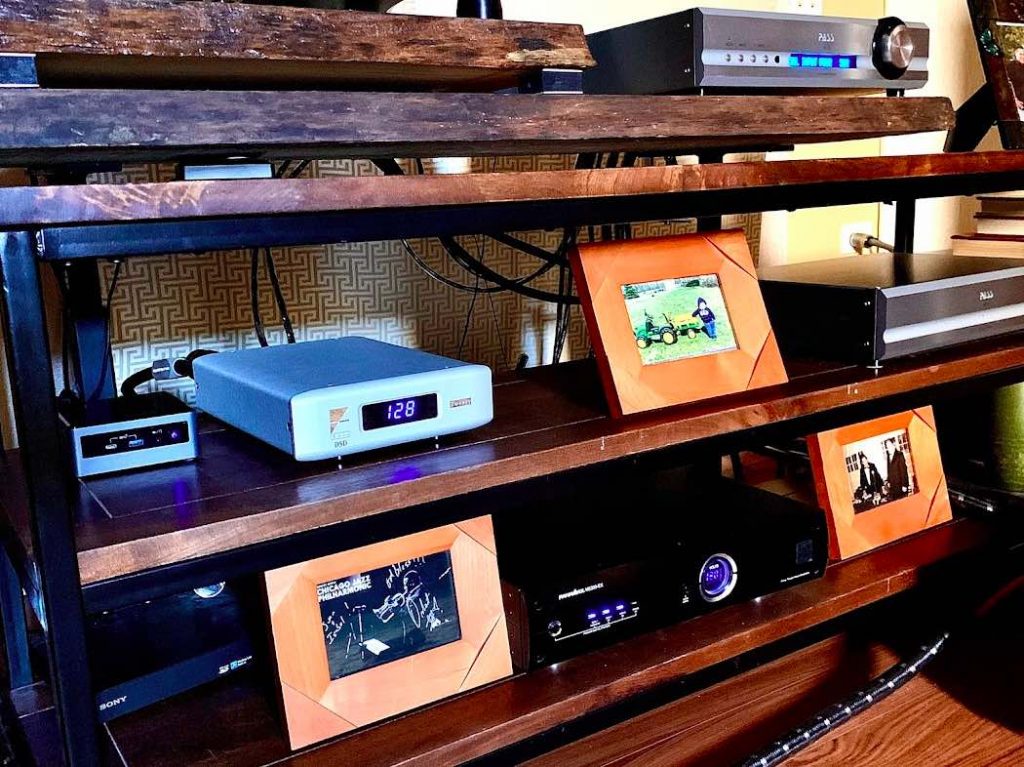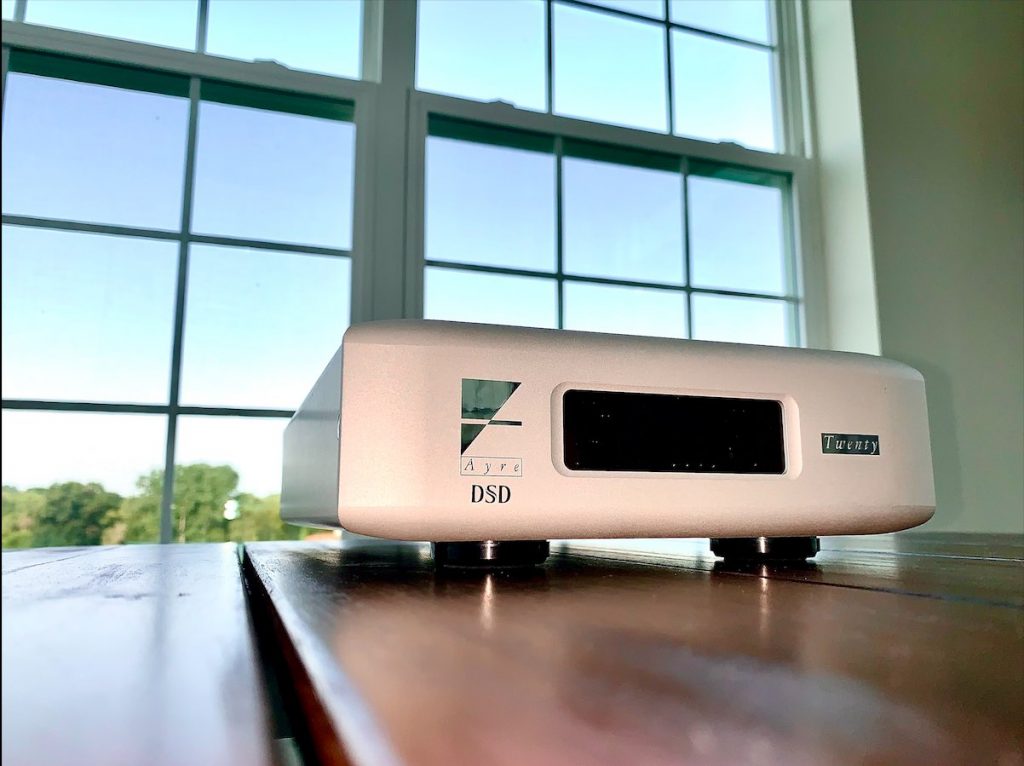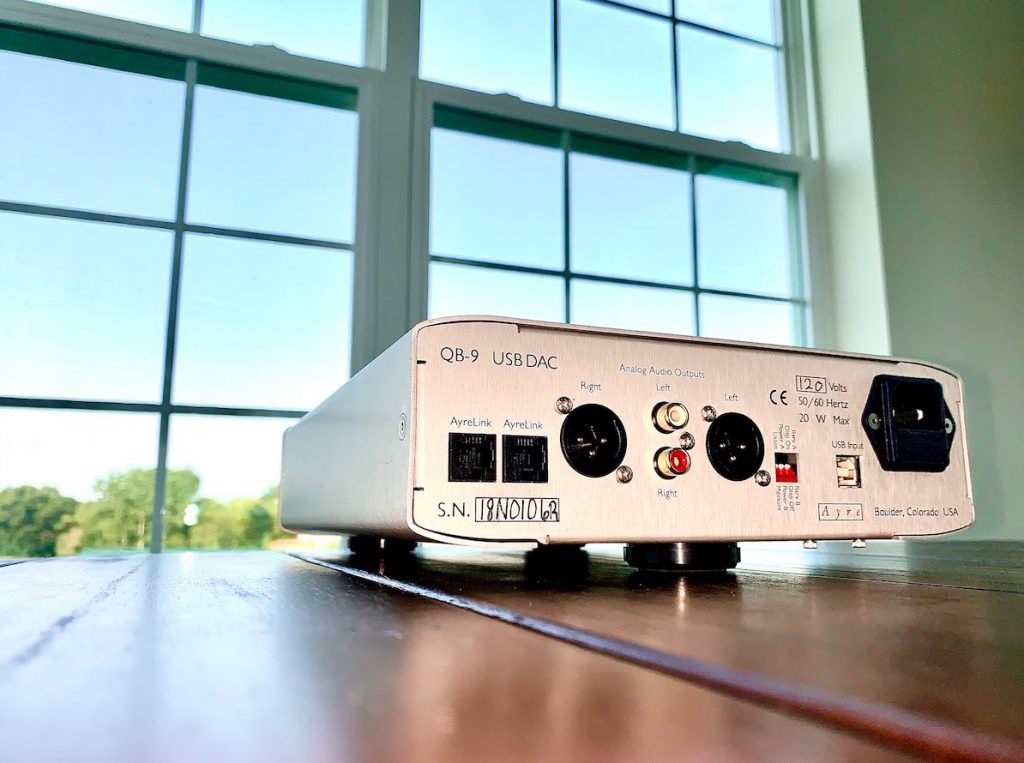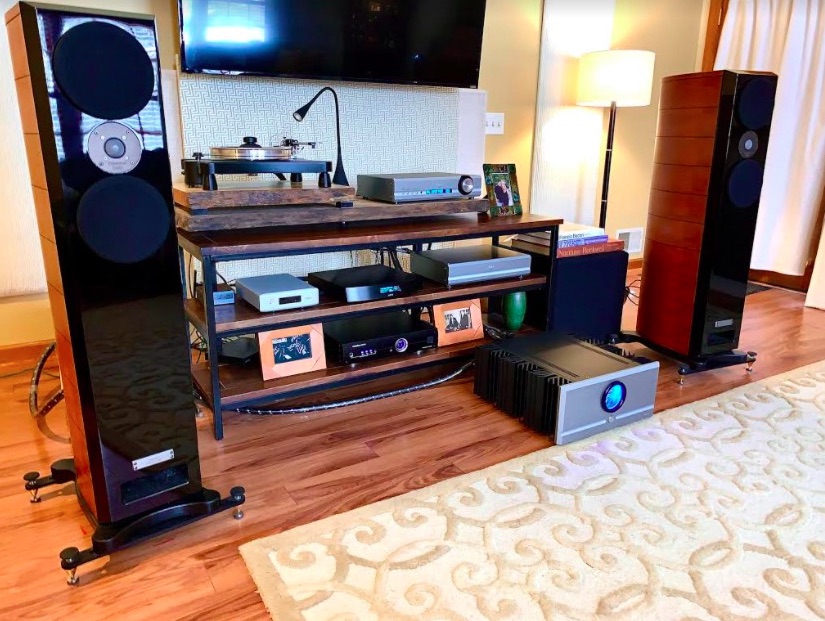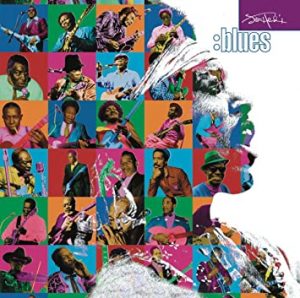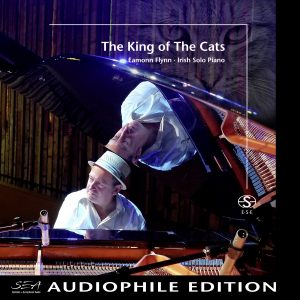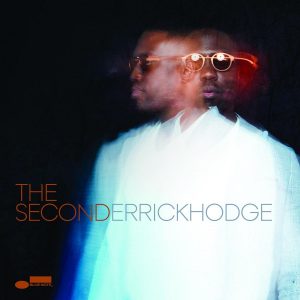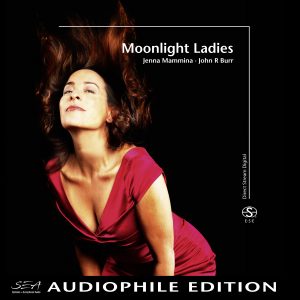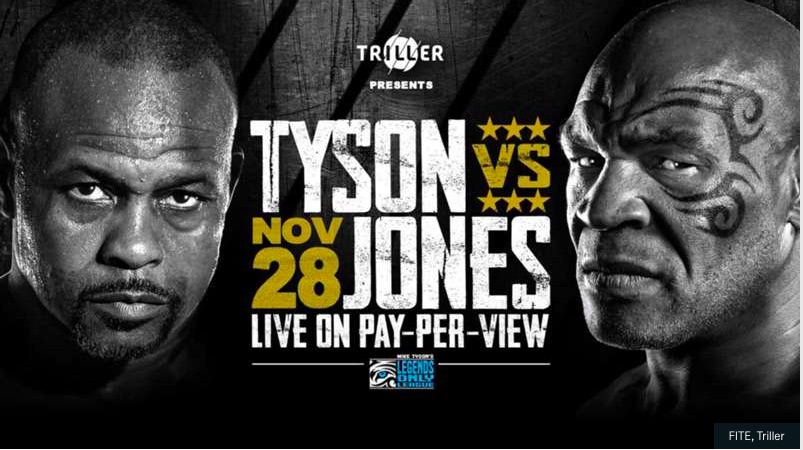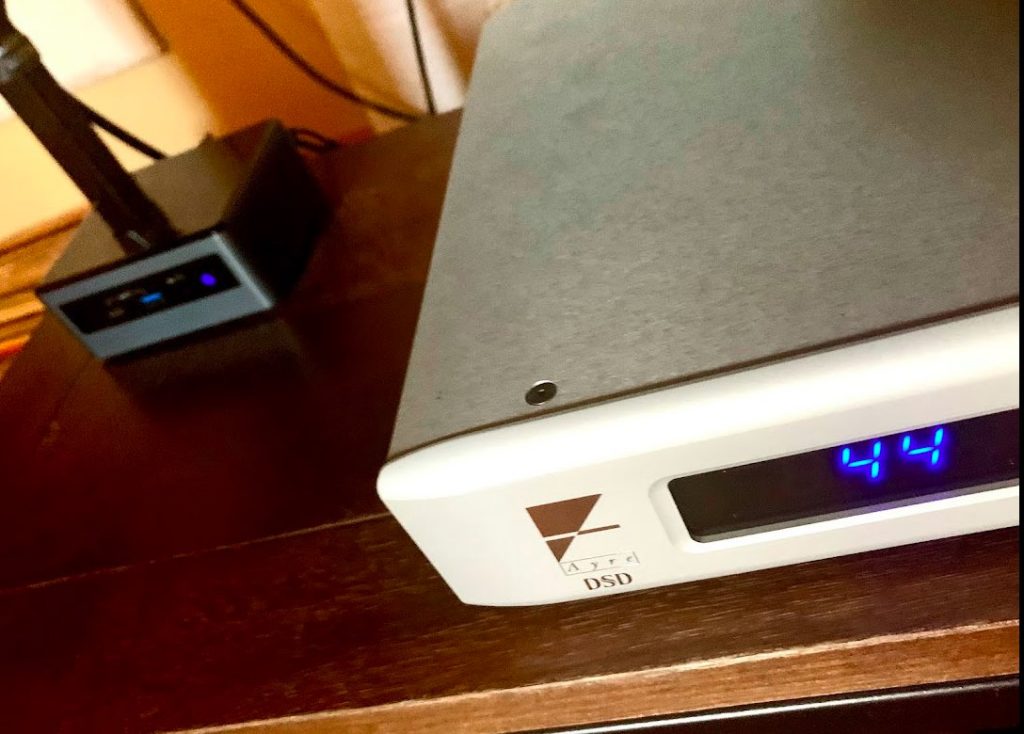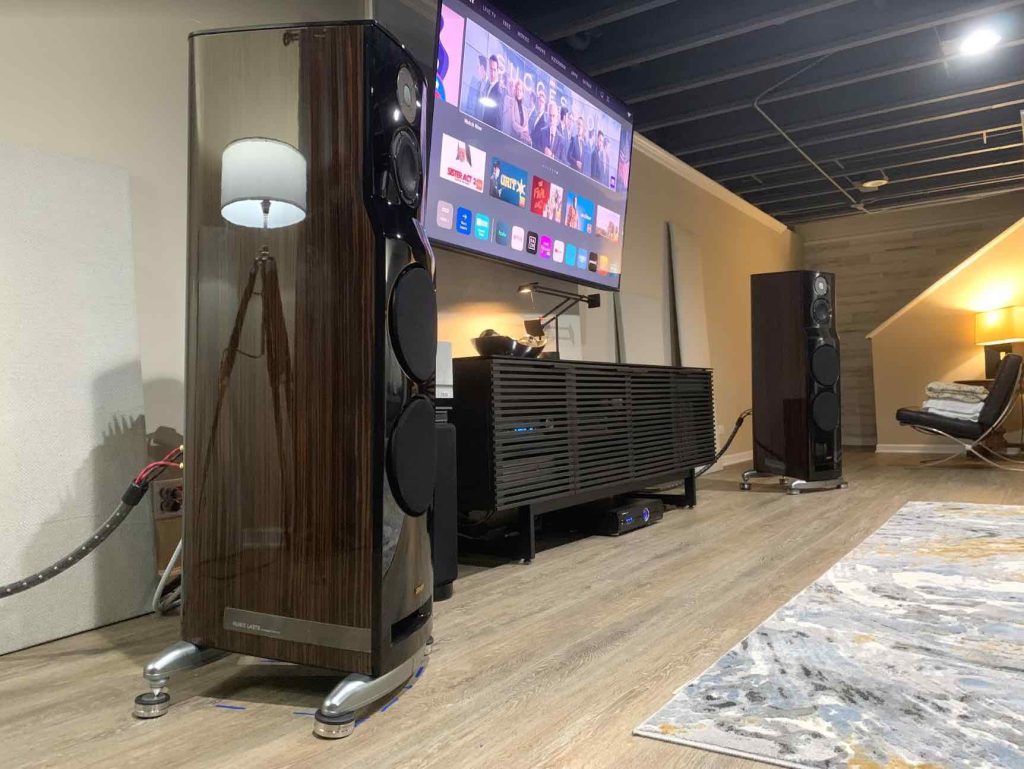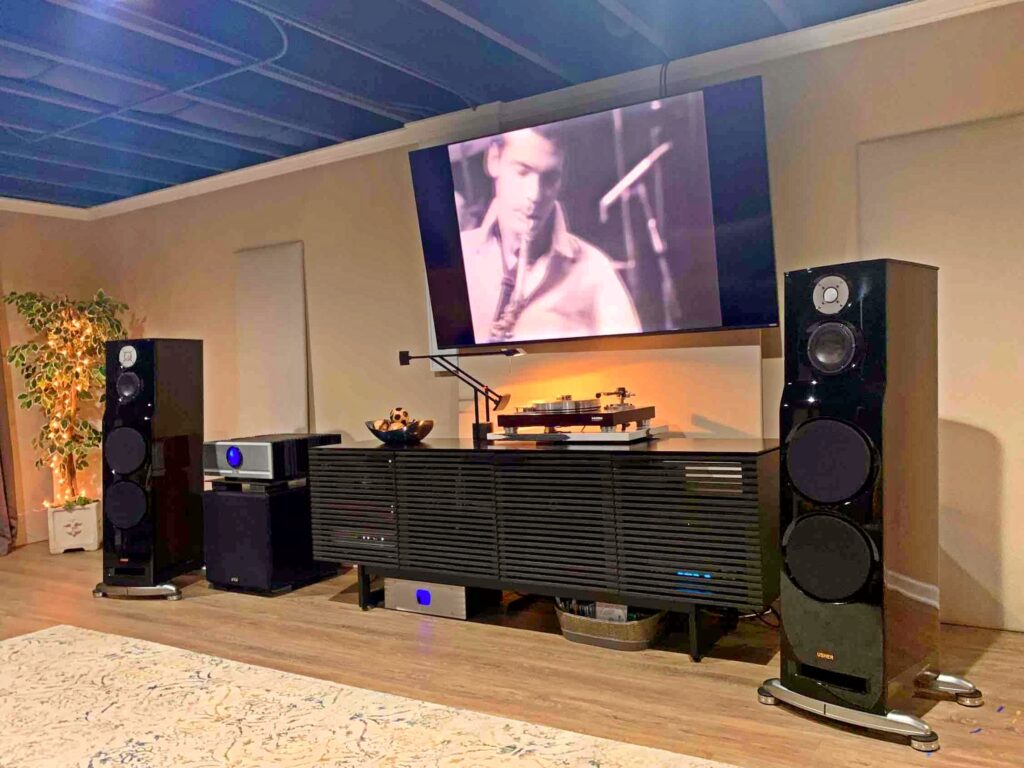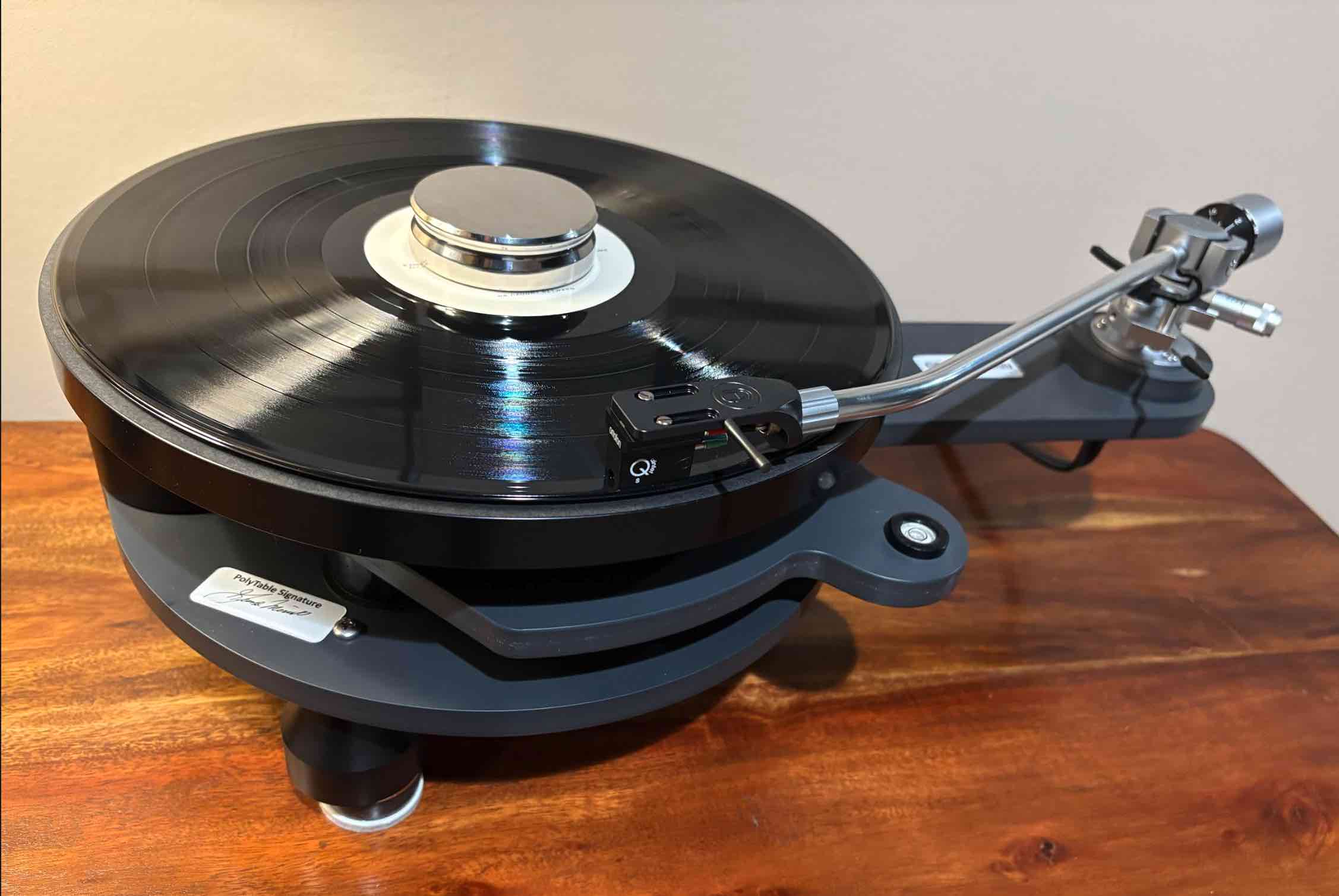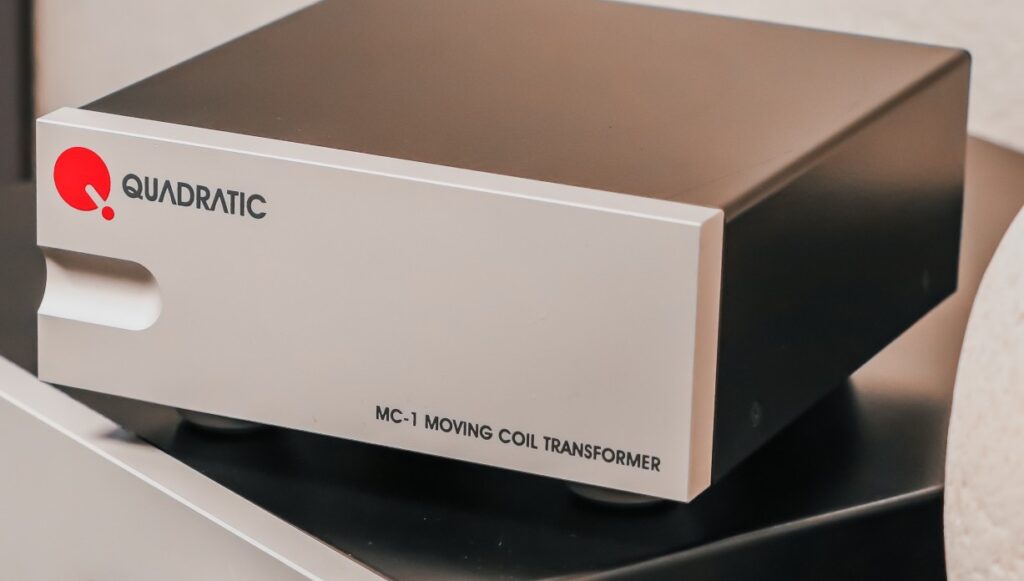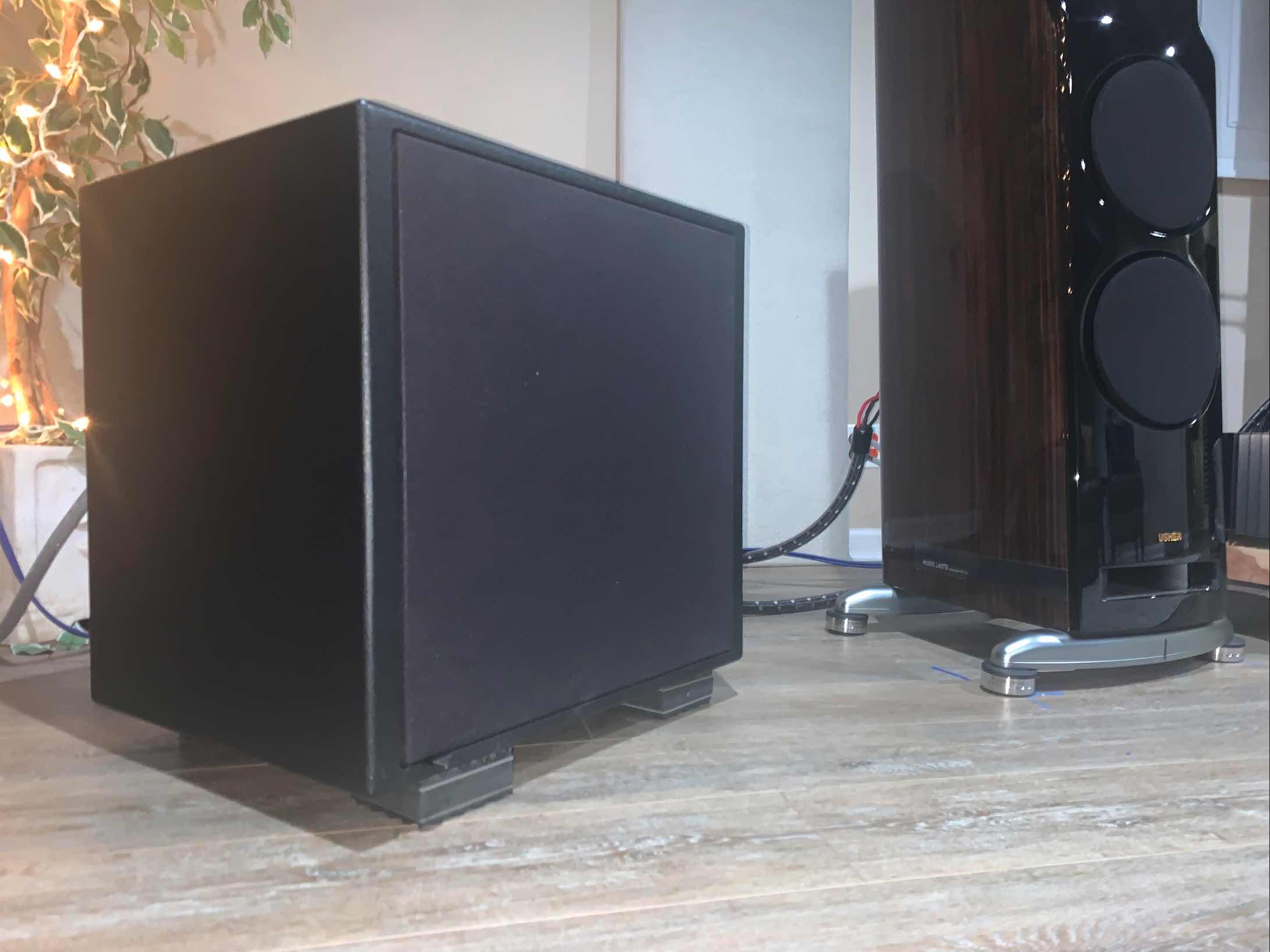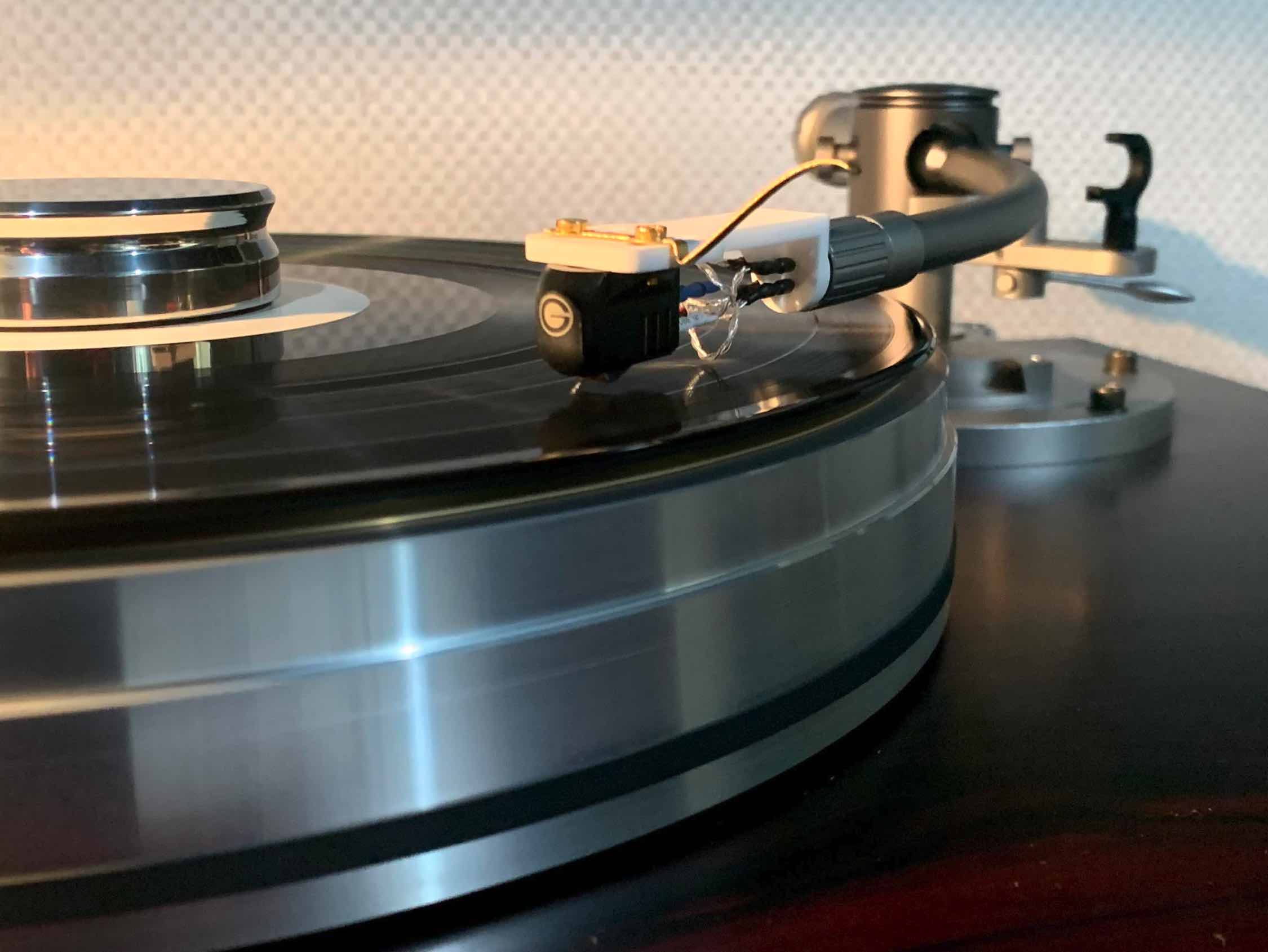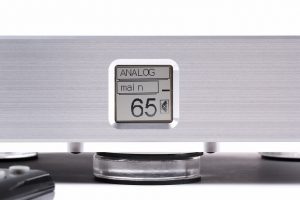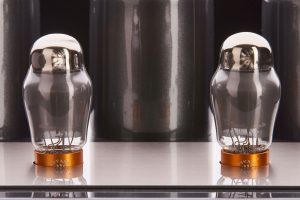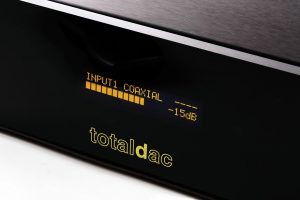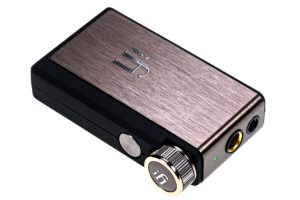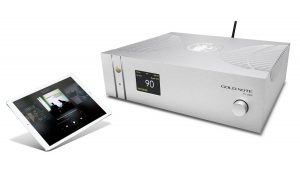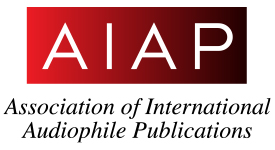Ever notice that our passion for audio sometimes mimics affairs of the heart? For example, as you muddle through a series of infatuations, disappointments, and "upgrades," you may find yourself gravitating to "the one that got away."
For me, it was the Ayre QB-9 Digital to Analog Converter in 2009. A siren of song spot lit in a darkened showroom, her petite, platinum blonde, curved rectangular chassis beckoned at the Audio Consultants-Libertyville store, and her twinkling bright blues in her display and her heavenly voicing drew me in. She could coo torch songs, rumba swing, and rock the demo Watt Puppies with incredible verve and fidelity. I was enamored.
To my surprise, when I asked a salesman to describe its sound for comparison purposes, he said, "Nothing. It sounds like nothing."
That threw me; it was doing something to make music sound so delectable. Of course, he was suggesting that the QB-9 adds nothing to the signal, but simply allows the music to flow through unaltered. But as amazing at the presentation was, I couldn't afford its $3450 price tag and, sadly, moved along.
Ironically five years earlier, I met a lovely young woman named Belle at church who with her blue eyes, curves and soft-spoken Irish accent, charmed me so much that within weeks I was convinced that we'd marry. Unfortunately, she was in the midst of a divorce and, avoiding the rebound, I waited and watched another man woo her into a serious long term relationship. I thought about her often but, sadly, moved on. Then when I bumped into her again in 2010, she was available—and we dated, fell in love, and married a year and a half later!
With the Ayre QB-9, it was a little more complicated; as with Belle, through the years I often thought about her, but the timing was never right. Then, there was the issue of it sounding like "nothing"; I mean, who wants to spend $3200 for an audio component that doesn't impart a sound or shimmer? Besides, by now I was involved in a long term love affair with a tube based DAC. Then, after experiencing the charms of solid state done right via Pass Labs electronics, I suddenly found myself DAC-free and playing the field once again. And then I spotted her online looking lovelier than ever. She was still the Ayre QB-9—but now with a new wrinkle: the Twenty upgrade. And the reviews were spectacular.
I just had to give her a go! In short order, I reached out to Brent Hefley, Marketing Director at Ayre Acoustics, and requested a review.
Photo courtesy of Ayre Acoustics
A Peek Behind the Curtain
The late Charles Gordon Hansen (1956-2017) was a brilliant 1981 Colorado University physics honors graduate who co-founded Avalon Acoustics with Robert Thorne (formerly Bob Grupp) and, afterwards, Ayre Acoustics with the help of friends Peter Bohacek and Katie Lehr. An avid bicyclist, he raced as an alternate on the U.S. team, was athletic, and in good health until he was struck by a motorcycle in 2006 while cycling, nearly lost his life, and subsequently died with health complications. Survived by former wife, Colleen and their children Ella and Carter. Following his death in 2017, he left a sizable chunk of his estate to the Denver Astronomical Society.
Highly regarded in the audio industry, Hansen gave much credit to giants whose shoulders he stood on, most notably John Curl. He was committed to building high quality products while paying his employees livable wages.
He also helped design Neil Young's portable Pono player. After Young referred to him as a genius in Stereophile, his sister added, "Yeah, and how annoying and what a pain it was to put up with a genius who thought he was always right!"
Over 25 years as president, Hansen built up Ayre, bringing to market a variety of preamps, amplifiers, and integrated electronics, descendants of their original "zero feedback" V-1 power amplifier. Digital sources like their QX-5 Twenty USB/streaming DAC, phono preamps, and headphone auxiliary products, like their Codex DAC/headphone preamp are currently in their lineup—with prices running a bit steep for the mass market. (Hifinews.com, Oct 2020)
Nevertheless, Hansen's stated goal was to bring that "magic" level of performance he'd achieved at Avalon to a more reasonable price level, to make it more accessible to the average person. Towards that end, while continuing building cost-is-no-object electronics, Ayre also focused on applying their technologies to more affordable designs to expand their consumer base, bringing "a different kind of musical experience to more people." (Audio Perfectionist Journal, 2003)
Elaborating on the Ayre experience, Hansen said:
"We've learned a lot about how to achieve a really musical sound with virtually any type of music. There is a lot of gear out there that can shine with one type of music, but really falls apart with another. For instance, it's tough to beat a good single-ended triode for sheer beauty with chamber orchestra or string quartet. But put on a rocking, dynamic piece, and the music tends to just sit there without coming to life. Some gear will sound fantastic with a reference-quality recording, but really nasty with an average recording. Some gear makes everything sound 'good' because it colors the sound, sweetening everything. With Ayre equipment, when you put on a great recording, of course it sounds great. But even when you put on an average recording you'll say, 'The recording isn't all that great, but listen to how beautiful those vocal harmonies are!' The equipment literally gets out of the way." (AP 2003)
A linchpin to their success has been the application of zero feedback in their designs, which he elaborated on in an excellent interview in the 2003 issue of Audio Perfectionist Journal below:
"In my experience, the most musically natural sound comes from circuits without feedback. Feedback was invented by Harold Black in the 1920s for the telephone company. There were repeater amplifiers along the telephone lines that would boost the signal to make up for the losses in the long wires. It was very important to have exact gain matching between these amplifiers, and this was extremely hard to achieve due to the variations in the amplifying tubes. By applying feedback to the amplifier circuits, the gain was now set by resistor values rather than by the tube characteristics, resulting in improved gain matching. This is the real reason negative feedback was developed.
"Feedback also happens to improve the measurable characteristics of amplifier circuits by increasing the bandwidth, reducing the distortion (at least for steady-state signals), and lowering the output impedance. And this is why its use became so universal in audio circuits.
"For decades, it was assumed that there was a direct correlation between measurements and sound quality. But there is something about feedback that we can't really measure that seems to have a detrimental effect on the sound quality of real musical instruments. It seems to be related to time domain performance.
"The simplest way to think about (time domain performance) is that feedback cannot respond to an error until after the error has occurred. And this correlates pretty well with what we hear. Compared to a zero-feedback design, adding feedback seems to overemphasize the leading edge of transients. This can give a more 'spectacular' sound in the HiFi sense, but it is less musically natural than a zero-feedback design. And this sonic 'thumbprint' seems to exist under a wide variety of conditions. On the other hand, a zero-feedback design becomes very chameleon-like from a sonic standpoint. In my experience, the zero-feedback designs will 'get out of the way' of the music with a wide variety of source material. And with our designs there isn't any reason to use feedback. The Ayre V-5 power amplifier has a bandwidth of around 200kHz, distortion of around 0.1% at 100 watts, and an output impedance of around 0.2 ohms. This level of measured performance is unprecedented for a zero-feedback design. There's really no reason to use feedback when we can achieve such numbers without it." (you can read more HERE)
Although Hansen passed in 2017, Boulder, Colorado-based Ayre Acoustics had already launched their $12,950 flagship AX-5 Twenty integrated amplifier in 2016 to celebrate their 20 year anniversary. (Hifinews.com, Oct 2020)
Twenty-Something?
Ayre currently offers a special upgrade program called "The Twenty" for arguably their most popular product, the QB-9 DAC that has sold in the thousands worldwide. Hefley emailed that the QB-9 DAC itself is no longer in production, however, when it was, he wrote, "the MSRP was $3450 and if it was still in production the new MSRP would probably be $3950 or $4250." Either way, he added, "The Twenty upgrade is $1500 and that is regardless of what version of QB-9 you have (Original, 24/192, or DSD)."
According to Ayre.com, the Twenty upgrade offers the following improvements:
- Their Diamond output circuit improves musicality and bass response.
- A new JFET differential stage lowers the noise floor.
- AyreLock power supply regulation for better rendering of fine musical detail.
- New AC noise filtering for improved resolution.
- Custom Ayre Asynchronous USB technology further reducing electrical noise in the system.
- New ESS DAC chip for improved signal to noise ratio and spatial detail.
- Six layer board design for optimal circuit isolation.
- Proprietary reclocking to eliminate USB domain jitter.
- PCM play back up to 384 kHz
- Native DSD capability up to DSD256 (4x)
- HDCD decoding
Sizing Her Up
If you don't have the QB-9, it is available on the used market from $900 to $1600, and it's lovely as ever.
It comes in silver or black, and its dimensions are 8 1/2" W x 11 1/2" D x 3" H and it weighs 5 pounds. Its facade is sparse; the front panel has no buttons, but merely a display window that indicates the sample rate of the music file being played (i.e., 44.1kHz, 96, etc.) in blue numbers against a black background. The rear panel offers, left to right, two AyreLink ports (proprietary two-line telephone line cord modular RJ-11 connector inputs for controlling your system via linked Ayre products), balanced and RCA connector outputs, a small bank of switches that can be toggled with a ballpoint pen tip for digital filter selection, power mode (adjusting standby), and display on/off, the USB input, and the power cord receptacle (to see the Ayre QB-9 DSD owner's manual, click HERE).
Initial Impressions
The QB-9 Twenty's digital delivery is very articulate, balanced and dynamic. Sitting on the front end of a very system anchored by the Pass Labs XP-12 preamplifier, X250.8 amplifier (and, later, the X150.8), and Straight Wire's flagship cabling, playing over the detailed and full bodied Usher Mini Dancer 2 speakers, it definitely belongs. Certainly, the Ayre is complemented by the 20' x 16' acoustically treated room (i.e., roughly 40 percent soft vs. 60 percent hard surfaces)—with its sofa, loveseat, shag rug, absorption panels at first reflection points, and bass traps—where comb filtering and other acoustic distortions are notably reduced, resulting in greater clarity.
Now the QB-9 Twenty won't transform a Two Buck Chuck into a 2018 Raymond Vineyards Cabernet Sauvignon, but provides the enriching enhancements of proper decanting, serving up your aural elixir slightly chilled and aerated in a proper crystal wine glass. As such, it doesn't add color or roundness, but adds just a hint of smoothness, buffing off some of the harsh edges from digital recordings.
This is readily apparent when comparing its digital filter's two algorithm settings—"Listen" (its default setting), which "provides greater accuracy in the 'time domain,' according to the user manual, and "Measure" that has greater frequency accuracy. In Listen mode, the QB-9 Twenty sounds stunning when delivering high quality recordings, but won't spare you the unpleasantness of badly mastered ones.
The Ayre QB-9 Twenty arrives at the tail end of my review of the $4500 Lumin T2 Network Player, so I am curious to see how the two compare. Now, the T2 can be operated using its own internal DAC or in bypass mode, employing an external one. With a Roon Optimized Core Kit (ROCK) equipped Intel NUC10i7FNH performing server duties, I take turns playing music with the two. While both are quite stunning, the T-2 seems warmer in its presentation, while the QB-9 Twenty seems a touch more linear. However, when I conduct close A/B tests, I am stunned. Frankly, the two sound like mirror images!
Moreover, when I compared playback of the Lumin T2 with its internal DAC versus employing the QB-9 Twenty externally, the two are virtually indistinguishable when adjusted for volume (the loudness level had to be raised to 69 with the Ayre to match the T2-internal DAC combo set at 65 on the Pass Labs XP-12 preamp in A/B tests). For example, Michael Franks' silky vocals, the percussion, acoustic guitar, and soprano saxophone are all well resolved... equally in "As Long as We're Both Together" (Michael Franks, The Music in My Head. Qobuz FLAC 44.1kHz, 16-bit).
But here's the real kicker: for $2400 to $3100 (cost of a used QB-9 plus the Twenty upgrade), you get a world class DAC that delivers sonic bliss competitive with much more expensive equipment.
And, in terms of appearance, its sleek and diminutive chassis provides a lovely Modern minimalist aesthetic.
It looks and plays lovely, and demonstrates it simply belongs with the best electronics and speakers, but now it's time to get down to business.
A Formal Evaluation
Jimi Hendrix. "Born Under a Bad Sign," Blues. FLAC 96kHz 24-bit ripped vinyl
It's not hard to see why he was so revered, as the growling, wailing, and wah wah of legendary axe master, Jimi Hendrix's electric guitar simply mesmerizes. With Billy Cox's bass, and Buddy Miles' snare, high hat, and bass drum keeping time, this session, as rendered by the Ayre QB-9 Twenty, is visceral, true to life, and a testament of how home audio can deliver a live performance to your living room. The low ground loop hum during a quiet moment in the live concert is an added bonus!
Eamonn Flynn, King of the Cats. Live in the Studio - E.S.E., Qobuz FLAC 192kHz 24-bit
You can hear the room as the depth of emotion, and rich timbral accuracy of Eamonn Flynn's baby grand piano shimmer and shine in real time and space in his masterful live solo rendition of the contemplative "hi Cailín Na nUrl." Notes floating in the air, transients and decay are breathtaking. Frankly, the QB-9 has a way of delivering the whole recording—meat, bones, sinew and all—in good recordings with incredible presence and accuracy.
Derrick Hodge, The Second. Qobuz FLAC 96kHz 24-bit
The snare and Hi hat are upfront and visceral, while Derrick Hodge's electric bass is rendered tight, precise, and deep in the delightful downtempo smooth jazz piece, "You Believed."
Jenna Mammina, Moonlight Ladies. Qobuz FLAC 192kHz 24-bit
The QB-9 Twenty nails the acoustic piano's tone and interaction with the room, and Jenna Mammina's breathy vocals are vivid, vacillating from wispy delicate to powerhouse lamplighter in her cover of James Taylor's "How Sweet It Is to Be Loved by You."
And dZihan & Kamien's "We Are" was delivered with plenty of weight, pace and slam, showcasing Sanya Budna's processed vocals which shimmer against an Indian flute and electronic beats in this dark and haunting downtempo Indie electronica piece (DZihan & Kamien, DK. Qobuz FLAC 44.1kHz 24-bit).
Poster courtesy of Triller and DAZN
Concluding Remarks
The Ayre QB-9 Twenty is packs a stellar delivery in everything digital served up. Like 51 year old Roy Jones Jr. (a small, all-time great boxer who'd held titles at super middleweight, light heavyweight and, briefly, heavyweight) holding his own against Mike Tyson, 54, in their November 2020 exhibition match, the QB-9 Twenty can mix it up with the best of them.
The caveat is that it only uses a USB input. For many, that is not a problem. In fact, when I listen to digital music files, I employ that input to great effect; however, for others that desire or need others like Toslink (optical), coax, BNC or AES/EBU inputs, this could be a deal killer.
However, if USB-only is not an issue, the Ayre QB-9 Twenty is an incredible value and outstanding performer at any price and, as such, I highly recommend it.
QB-9 Twenty DAC Upgrade
Retail: $1500
Ayre




